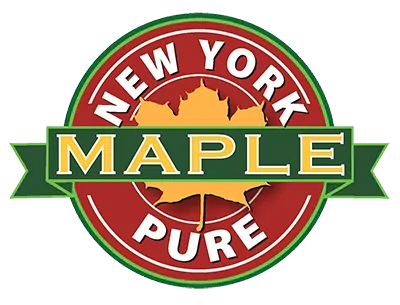
Early in Vermont’s history, each family made their own maple sugar for personal consumption. Later, sugar makers started businesses to produce maple products and sell them to the general public. Technology changed again, and tanks on sleds were used to collect the sap and were drawn by horses or oxen. The sugar house was now their destination where the invention of the evaporator gave more control to the sugarmakers boiling process.
Today, plastic tubing transports the sap from the trees to gathering tanks. From there it is transported to the sugar house where it is transferred to a central storage tank to feed the evaporator which boils off most of the water, leaving sweet, thick maple syrup.

Pure Maple Syrup – Natural and Nutritious
Pure Maple Syrup is a natural and nutritious sweetener and is a smart choice as a topping or as a flavorful ingredient in baking and cooking.
Educational Resources
Kids love Maple Syrup and the New York State Maple Producers are always educating and entertaining children and families throughout the year.
Insist on New York Pure Maple
Maple is New York’s finest tradition – you can taste it in every drop.







 Menu
Menu